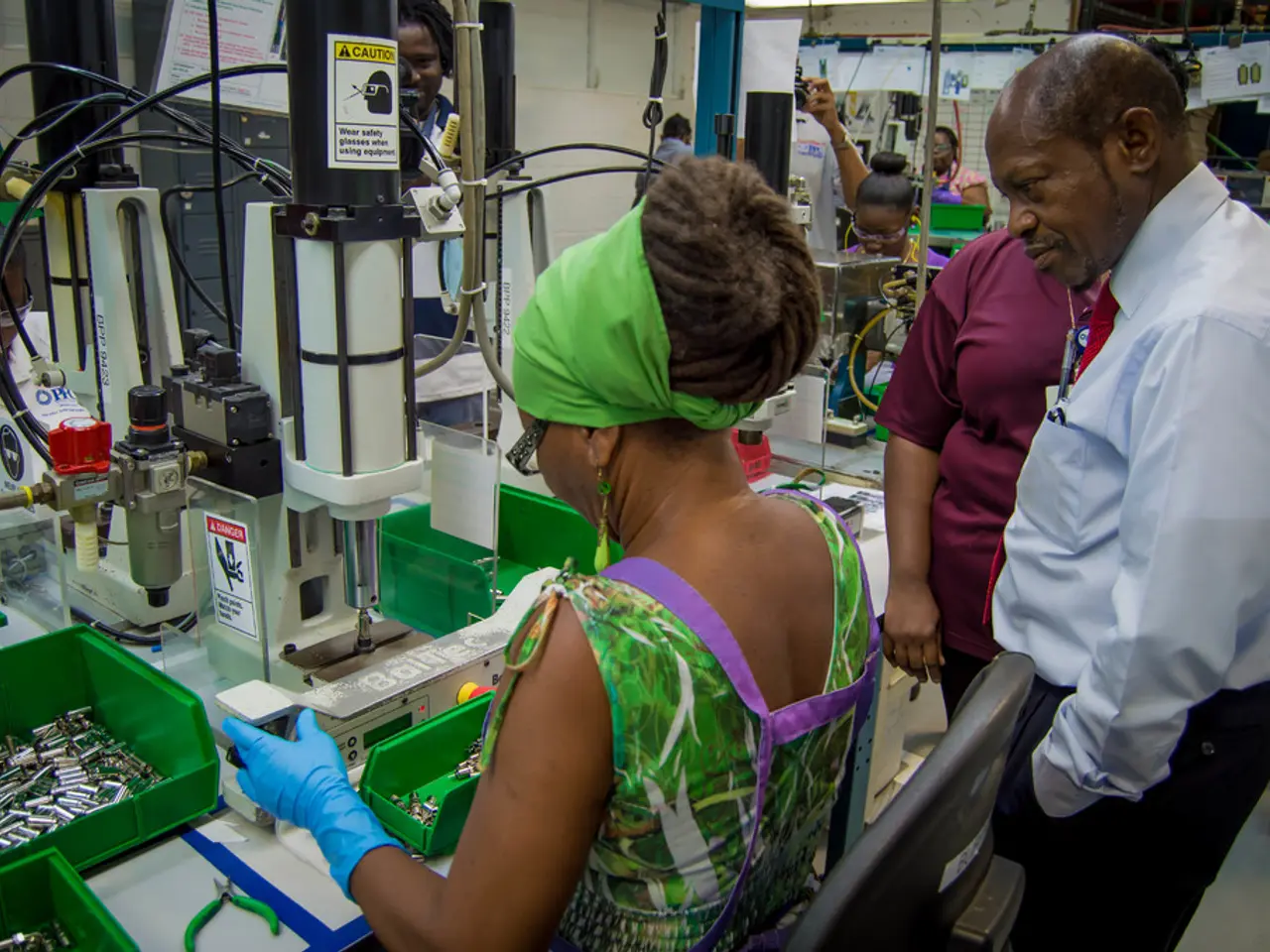AI integration in Schneider Electric's safety processing patents, aiming to minimize risks and hazards
Schneider Electric's AI-Powered Safety Revolution in Industrial Automation
Schneider Electric, a leading company driving digital transformation in energy management and automation, has unveiled a new patent focused on integrating Artificial Intelligence (AI) into functional safety. This groundbreaking technology is set to revolutionize industrial automation, offering significant benefits such as predictive maintenance, hazard detection, operational efficiency, asset lifespan extension, and energy savings [1][2].
The AI system proactively identifies potential equipment defects or failures early, enabling condition-based maintenance rather than reactive. This approach reduces unplanned downtime and maintenance costs, improving overall safety by preventing accidents linked to equipment failures and optimizing operational workflows to enhance reliability and reduce operational expenses [1][2].
Key benefits of this AI-powered technology include predictive maintenance, operational efficiency improvements, energy savings, and enhanced workplace safety and hazard reduction. Predictive maintenance, demonstrated in case studies from plants like Lexington Factory and Nestlé, reduces downtime and maintenance costs by detecting defects early, preventing critical failures and extending asset life [1]. Operational efficiency improvements are achieved through real-time decision-making and optimized workflows, achieving 20-30% efficiency gains [2]. Energy savings are accomplished through on-device AI (AI at the edge) that autonomously optimizes building systems like HVAC with low latency, reducing energy waste and operational expenses without heavy reliance on cloud processing [3][4].
Applications in industrial automation span continuous remote asset monitoring and predictive analytics in manufacturing plants, AI-powered visual inspection systems detecting physical defects on conveyor chains or electrical assets, smart building and facility automation controlling HVAC and electrical load management for efficiency, compliance, and safety, and adaptive, autonomous control at the edge for real-time process adjustments without cloud dependence [1][3][4].
Chris Stogner, senior director of offer management at Schneider Electric, stated that they are the first to automate hazard process analysis with AI. The patent allows for the simulation of hazards, with varying conditions, using a process hazard analysis tool. This step towards combining AI and industrial automation for enhanced safety measures is a testament to Schneider Electric's commitment to the advancement of AI in industrial processes [1][2][3][4].
As more industries embrace digital transformation, the advantages of implementing AI in day-to-day operations increase. The goal is to prevent industrial hazards and save lives with this AI system. The latest patent from the EcoStruxure Triconex Safety team can identify potential hazards and safeguards in a process, validating protection mechanisms in an industrial process, and taking advantage of industrial, real-time data to revalidate HAZOP studies [1][2].
Three other Schneider Electric patents incorporating AI into functional safety lifecycle are currently pending, further demonstrating the company's commitment to this innovative technology.
[1] Schneider Electric. (2021). Schneider Electric's AI-Powered Safety Revolution in Industrial Automation. Retrieved from https://www.schneider-electric.com/en/press-releases/2021/schneider-electrics-ai-powered-safety-revolution-in-industrial-automation
[2] Schneider Electric. (2021). Schneider Electric's AI-Powered Safety Revolution in Industrial Automation: Case Study. Retrieved from https://www.schneider-electric.com/en/case-studies/ai-powered-safety-revolution-in-industrial-automation
[3] Schneider Electric. (2021). Schneider Electric's AI-Powered Energy Savings in Industrial Automation. Retrieved from https://www.schneider-electric.com/en/case-studies/ai-powered-energy-savings-in-industrial-automation
[4] Schneider Electric. (2021). Schneider Electric's AI-Powered Operational Efficiency in Industrial Automation. Retrieved from https://www.schneider-electric.com/en/case-studies/ai-powered-operational-efficiency-in-industrial-automation
The AI system integrated into Schneider Electric's functional safety is designed to revolutionize industrial automation by predicting potential equipment failures and optimizing workflows for enhanced operational efficiency and reduced downtime. By proactively identifying and addressing hazards, Schneider Electric's AI technology helps prevent accidents and save lives in various industrial settings.




